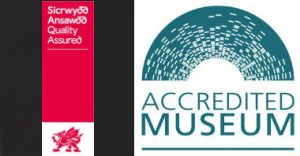Swansea Museum collection includes about 1000 Items of archaeology found locally of animals that are now either extinct or today you would find wondering in places like the African Savannah.
In 1823 a remarkable discovery was made in Paviland Cave on the Gower. It turned out to a human skeleton buried some 30,000 years ago and is the oldest ritual burial found in Europe.
Paviland Cave overlooks the sea but not back when the so called Red lady of Paviland was buried. The sea was roughly seventy miles away.
The museum also has approximately 50,000 specimens in the natural history collection. The natural history gallery explores the dramatic decline in local and international species.
The session will include a PowerPoint presentation and worksheets linked to museum objects.
The session will consider:
- Why has the sea level changed so dramatically?
- Why so many of the animals around then are now extinct?
- Why is the level of extinction increasing today?
- Why museums keep natural history collections and some of the ethics involved?
- Why does the climate change over long periods of time?
- Are we entering a new geological era, due to human behaviour?
Progression level 2 & 3
Target age range: Yr 3 to 6
Length of Session: 2 Hours

